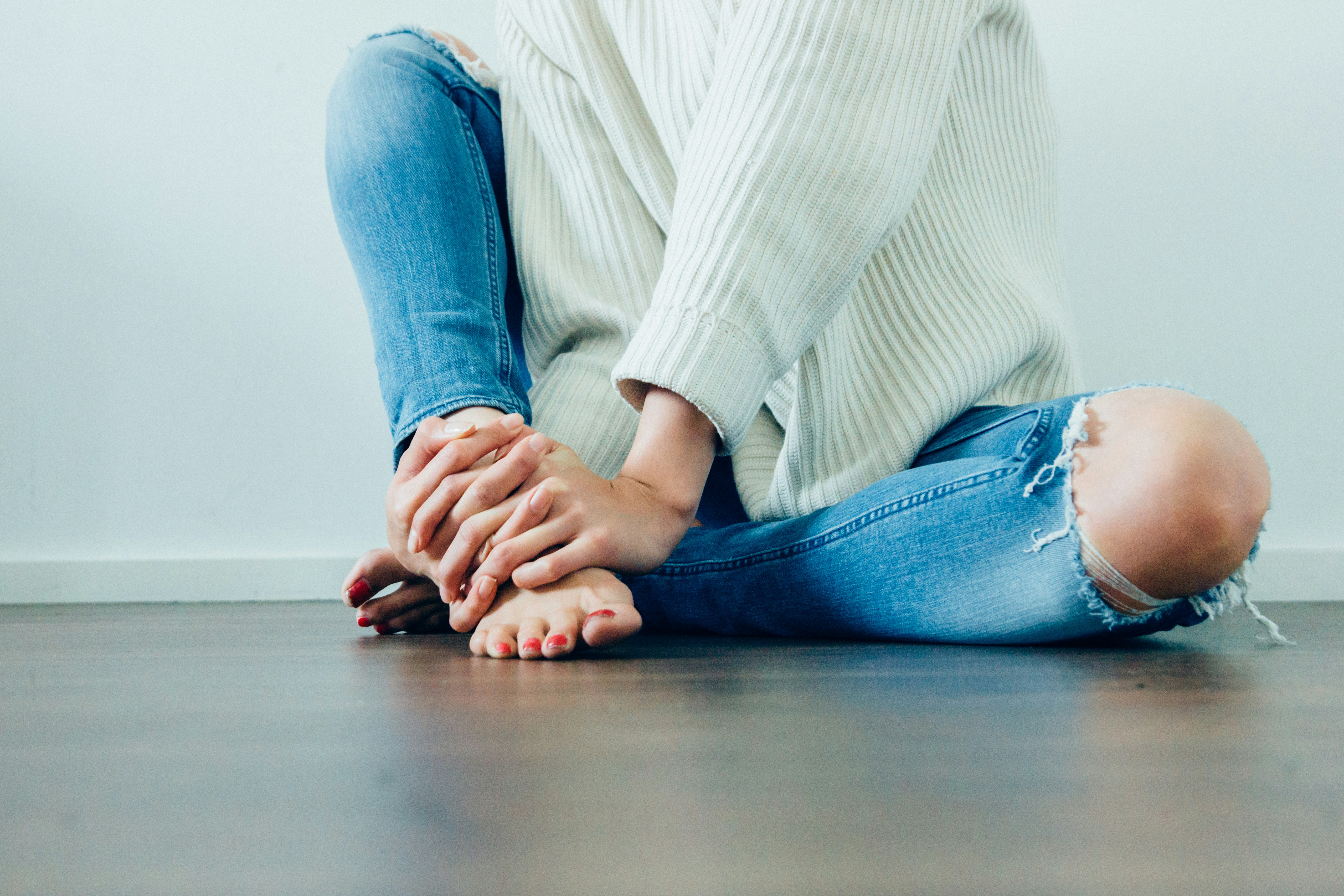Period Product Guide
Pads, Tampons, Panties or Cups: Which One is the Best ?
Are you confused by the choices when it comes to managing your period? Feeling unsure about menstrual cups, tampons, pads, or absorbent period garments?
Navigating Your Period: A Holistic Guide to Menstrual Alternatives
Welcome to the Healcycle blog, your trusted space for all things women's menstrual and mental health, we recognize that your choices are shaped by various considerations, whether you're prioritizing comfort, budget, or eco-friendliness, perhaps you identify as someone who’s looking for environmentally conscious way to manage your period? we aim to empower you to make the best decision for what works best for you and your menstrual health.
With a growing range of alternatives available, understanding their benefits and drawbacks is essential to finding what truly suits your individual needs, lifestyle, and values.
Let's dive into the world of menstrual alternatives:
1. Menstrual Cups:
A menstrual cup is a small, flexible cup made of medical-grade silicone or rubber that is inserted into the vagina to collect menstrual blood. Unlike1 tampons and pads that absorb blood, the cup catches it, which can then be emptied, rinsed, and reused for up to several years.
Pros:
· Safety and Doctor Recommendation: Menstrual cups are considered safe by the medical community. They are made of biocompatible materials, minimizing the risk of irritation. Many doctors and gynaecologists recommend them as a safe and effective option.
· Long-lasting and Cost-Effective: A high-quality menstrual cup can last for several years, making it significantly more cost-effective in the long run compared to disposable pads and tampons. The initial investment, typically ranging from a few dollars to around $50, is offset by years of use.
· Eco-Friendly: By reducing the need for single-use products, menstrual cups significantly decrease the amount of waste generated from period products, contributing to a more sustainable lifestyle. It's estimated that a woman might use over 10,000 disposable menstrual products in her lifetime.
· Longer Wear Time: Menstrual cups can typically be worn for up to 8-12 hours, depending on your flow, offering greater convenience, especially overnight or during busy days.
· Higher Capacity: Menstrual cups generally hold more blood than tampons or pads, meaning fewer changes are needed.
Cons:
· Learning Curve: Insertion and removal can take practice and might feel awkward initially, especially for those who haven't used internal menstrual products before. However, with patience and proper technique, most users find it becomes easy.
· Potential for Mess: Emptying the cup can be a bit messy, particularly in public restrooms. However, some users carry a small bottle of water to rinse the cup in the stall.
· Rare Risks: While generally safe, there are rare reports of minor irritation, allergic reactions, or in very rare cases, impact on an IUD position. It's always recommended to consult with your healthcare provider if you have an IUD or any concerns.
· Cleaning and Sterilization: The cup needs to be rinsed with water and a mild, unscented soap after each emptying and sterilized in boiling water at the end of each cycle. This might be inconvenient for some.
2. Sanitary Pads:
Sanitary pads, also known as menstrual pads or napkins, are absorbent pads worn externally in underwear to absorb menstrual blood. They are typically made of layers of absorbent material and come in various sizes and absorbencies.
Pros:
· Easy to Use: Pads are straightforward to use, requiring no internal insertion, making them a comfortable and familiar option for many.
· Variety and Accessibility: They are widely available in various absorbency levels, lengths, and with or without wings for added protection. This makes it easy to find a pad that suits your flow and needs.
· No Internal Irritation: For individuals who find internal products uncomfortable or have certain health conditions, pads offer an external solution without the risk of vaginal irritation from insertion.
· Good for Beginners: Pads are often the first menstrual product used by individuals starting their periods due to their simplicity.
Cons:
· Environmental Impact: Disposable pads contribute significantly to landfill waste as they are single-use and made of materials that take hundreds of years to decompose.
· Potential for Discomfort: Pads can sometimes feel bulky or shift around, leading to discomfort or leaks, especially during physical activity.
· Odour: Menstrual blood can develop an odour when exposed to air, which can be a concern with pad use if not changed frequently.
· Skin Irritation: Some individuals may experience skin irritation or allergic reactions to the materials or chemicals used in some disposable pads.
· Not Ideal for Swimming: Pads are not suitable for swimming as they absorb water and lose their effectiveness.
3. Tampons:
Tampons are small cylinders of absorbent material, typically cotton, rayon, or a blend of both, that are inserted into the vagina to absorb menstrual blood internally. They often come with an applicator made of cardboard or plastic to aid insertion.
Pros:
· Discreet and Comfortable: When inserted correctly, tampons are generally comfortable and discreet, allowing for freedom of movement and are less noticeable than pads.
· Suitable for Swimming and Activities: Tampons can be worn while swimming and during most physical activities without the worry of leaks or visibility.
· Effective Absorption: Tampons are designed to absorb menstrual flow effectively, helping to keep you feeling dry.
Cons and Addressing Common Myths:
· Risk of Toxic Shock Syndrome (TSS): TSS is a rare but serious condition caused by bacteria that can occur with tampon use. The risk is higher with super-absorbent tampons and when tampons are left in for too long. It's crucial to change tampons every 4-8 hours and use the lowest absorbency needed for your flow.
· Pain or Difficulty Inserting: Some individuals, particularly those new to tampons, may experience difficulty or discomfort during insertion. Using tampons with applicators and ensuring you are relaxed can help. If you consistently experience pain, consult with a healthcare provider.
· Vaginal Dryness: Using tampons that are too absorbent for your flow can sometimes lead to vaginal dryness and irritation. It's recommended to use the lowest absorbency necessary.
· Environmental Concerns: Like disposable pads, conventional tampons contribute to landfill waste. However, some brands offer tampons made from organic cotton and with biodegradable applicators, which are more eco-friendly options.
4. Period Panties: The Comfortable and Sustainable Underwear
What it is: Period panties are reusable underwear designed with built-in absorbent layers to absorb menstrual blood. They come in various styles and absorbency levels, from light spotting to heavy flow.
Pros:
· Reusable and Eco-Friendly: Period panties are a sustainable option that significantly reduces the amount of disposable menstrual waste. A single pair can replace many disposable pads or tampons over its lifespan (typically 2-5 years with proper care).
· Comfortable and Convenient: They feel just like regular underwear, offering a comfortable and hassle-free way to manage your period. There's nothing to insert or dispose of immediately.
· Leak-Proof Protection: Many period panties feature multiple layers, including a moisture-wicking top layer, an absorbent core, and a leak-proof outer layer, providing reliable protection against leaks.
· Cost-Effective in the Long Run: While the initial cost of period panties might be higher than a pack of disposable products, they save you money over time by eliminating the need for monthly purchases.
· Variety of Styles and Absorbencies: Period panties are available in various styles (briefs, hipsters, thongs, etc.) and absorbency levels to suit different flow days and preferences.
· Can be Used as Backup: They can also be used as a backup with other menstrual products like cups or tampons for added protection on heavy flow days.
Cons:
· Initial Cost: The upfront cost of purchasing several pairs of period panties can be higher than buying disposable products.
· Washing and Care: Period panties need to be rinsed after use and then machine-washed and air-dried according to the manufacturer's instructions. This requires a bit more effort than disposing of a pad or tampon.
· Drying Time: They can take longer to dry than regular underwear, so you need to have enough pairs to rotate through.
· Potential for Odour: While many brands have antimicrobial layers to control odour, it's still important to change them regularly, especially on heavier flow days.
PFAS Concerns: Recent studies have raised concerns about the presence of PFAS ("forever chemicals") in some brands of period underwear. It's advisable to check product labels and opt for brands that are certified PFAS-free.
Healcycle Support: Choosing the right menstrual alternative is a personal decision based on your individual needs, lifestyle, comfort level, and values. We encourage you to explore these options, listen to your body, and find what works best for you. Remember, you can even use different products at different times during your cycle or for various activities.
The Healcycle app is here to support you on this journey, providing you with the tools to track your cycle, understand your body better, and make informed choices about your menstrual health.
References:
Van Eijk, A. M., Zulaika, G., Lenchner, M., Mason, L., Sivakami, M., Nyothach, E., Ungar, L., Oduor, C., Okoth, F., & Phillips-Howard, P. A. (2019). Menstrual cup use, leakage, acceptability, safety, and effect on quality of life: A systematic review and meta-analysis. The Lancet Public Health, 4(6), e339-e355. https://doi.org/10.1016/S2468-2667(19)30111-2
Howard, C., Rose, C. L., Trouton, K., Stamm, H., Marentette, D., Kirkpatrick, N., & Money, D. (2011). FLOW (finding lasting options for women): Multicentre randomized controlled trial comparing tampons with menstrual cups. Canadian Family Physician, 57(6), e208-e215.
Vostral, S. L. (2011). Rely and toxic shock syndrome: A technological health crisis. The Yale Journal of Biology and Medicine, 84(4), 447–459.
Meyer, R., Rottenstreich, A., Mohr-Sasson, A., Dori-Dayan, N., Toren, A., & Levin, G. (2021). Tampon loss – management among adolescents and adult women. Journal of Obstetrics and Gynaecology, 41(2), 288-290. https://doi.org/10.1080/01443615.2020.1755631
Phillips-Howard, P. A., Nyothach, E., ter Kuile, F. O., Omoto, J., Wang, D., Zeh, C., Onyango, C., Mason, L., Odhiambo, F., Vulule, J., & Weiss, S. (2016). Menstrual cups and sanitary pads to reduce school attrition, and sexually transmitted and reproductive tract infections: A cluster randomised controlled feasibility study in rural Western Kenya. BMJ Open, 6(11), e013229.
Latest
From the Blog
Discover fresh insights, practical tips, and empowering stories to help you learn and grow in your PMDD healing journey. We're always here to remind you that you're not alone







